How to grow carrots?
Written by Joy
Nov 08 2021
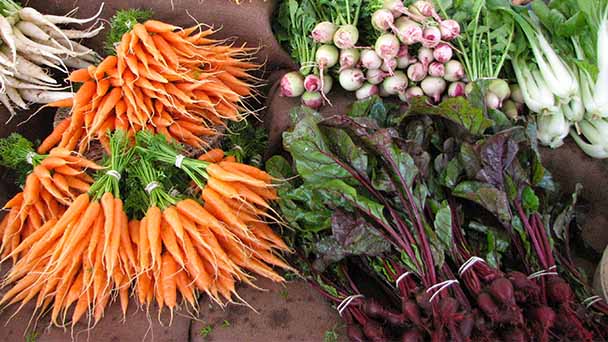
Carrots appeared in Europe around the 12th century. At this time carrots were grown in various colors such as red, yellow, orange, purple and white. Carrots are native to the hilly areas of Afghanistan. Carrots belong to the Umbelliferae family and belong to the same family as parsley, celery, parsnips, and fennel. They are easy to grow from seeds in the garden, in the planting box, or even in the larger pots. As long as the soil is properly treated before planting, carrots can survive almost any climate. Gardeners can start planting beautiful, juicy carrots immediately by following the steps below. This passage is mainly talking about how to plant carrots and when to plant carrots.
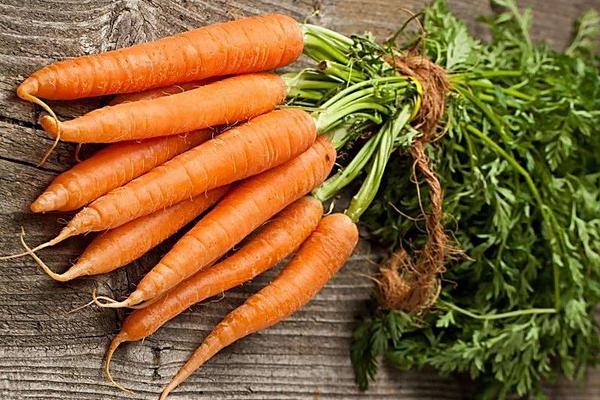 Chantenay carrot plants can grow up to 13 to 15 cm long in the soil and can be planted in most types of soil, but they are more suitable for fertile, sticky soil.
Chantenay carrot plants can grow up to 13 to 15 cm long in the soil and can be planted in most types of soil, but they are more suitable for fertile, sticky soil.
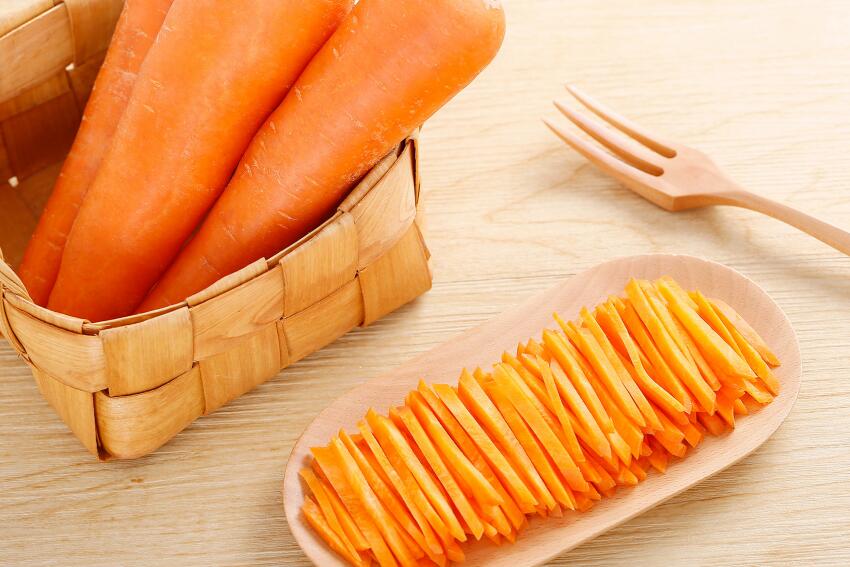 This carrot plant, which is common in supermarkets, needs to be planted in deep, fluffy soil. The characteristic of Emperor Carrots is that the roots growing on the rhizome are very slender. The soil used to grow this carrot plant is very particular, so it's necessary to make sure your soil is fertile, fluffy, deep enough, and pay attention to good drainage before planting this carrot plant.
This carrot plant, which is common in supermarkets, needs to be planted in deep, fluffy soil. The characteristic of Emperor Carrots is that the roots growing on the rhizome are very slender. The soil used to grow this carrot plant is very particular, so it's necessary to make sure your soil is fertile, fluffy, deep enough, and pay attention to good drainage before planting this carrot plant.
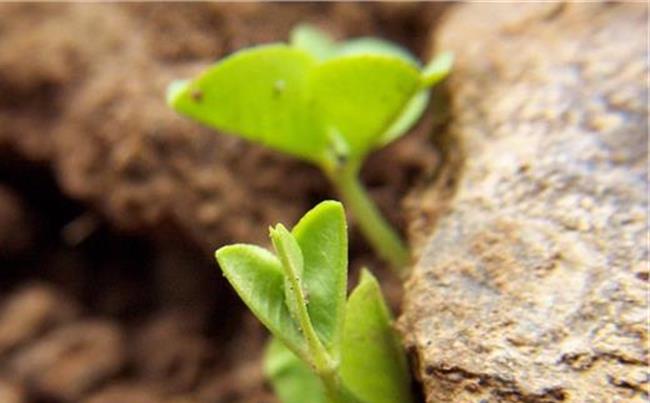 It is very important to ensure that the soil of your carrots is puffy when planting carrots. It's a good choice to use a shovel to thoroughly loosen the soil in the planting area.
It is very important to ensure that the soil of your carrots is puffy when planting carrots. It's a good choice to use a shovel to thoroughly loosen the soil in the planting area.
You'd better pick out rocks or hard, agglomerated soil in these places. Picking out all the small stones with a rake is vital for every gardener. The soil you want should be fluffy and not hard and clumpy. You may need to make a nursery to grow carrots. Since carrots are demanding on soil conditions, it is better to plant them in new areas in existing areas. Carrots are grown in a nursery made of cedar wood because it will not mold in humid conditions.
You may need to make a nursery to grow carrots. Since carrots are demanding on soil conditions, it is better to plant them in new areas in existing areas. Carrots are grown in a nursery made of cedar wood because it will not mold in humid conditions.
Carrots prefer cold weather indeed. If you are planting in a cold-resistant zone of the United States Department of Agriculture 8 or warmer, you should plant it in the fall or winter. You'd better make sure the soil has been loosened again before planting. You can also learn to grow carrots in pots. The method of growing carrots in pots is the same as on the ground or in a planting box. Just make sure that the flowerpot is deep enough so that it can hold the carrots that grow and allow its roots to grow.
You can also learn to grow carrots in pots. The method of growing carrots in pots is the same as on the ground or in a planting box. Just make sure that the flowerpot is deep enough so that it can hold the carrots that grow and allow its roots to grow.
You can sow at will or plant the seeds in rows. If carrots planted in rows, the seeds should be planted in pits 3 to 5 cm deep, and the distance between the pits should be approximately 10 cm. For fluffy soil, you can use your fingers to pick a hole. Don't forget to put six seeds in each pit.
It's a good choice to cover the seeds of carrots with 1.3cm thick loam. You can use compost, plant a soil mixture, or even mix some sand, especially in warm areas. Sand helps support the seedlings that grow. (Find more Winter Vegetables here.) About a week after planting the carrots, you can gently raking the soil to avoid weeds. This will destroy the weeds that have taken root. When raking the soil, the action should be light, and it should be done in a direction perpendicular to the row of carrots. This will not affect the growth of carrot seeds.
About a week after planting the carrots, you can gently raking the soil to avoid weeds. This will destroy the weeds that have taken root. When raking the soil, the action should be light, and it should be done in a direction perpendicular to the row of carrots. This will not affect the growth of carrot seeds.
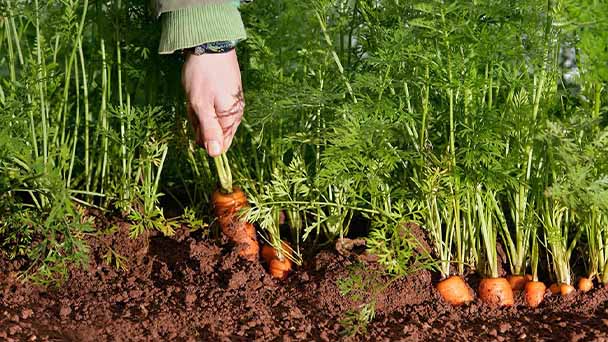 Putting a few inches of leaves, bark, or hay around the sprouted seedlings to keep water from losing is necessary. Besides, you'd better pull out the grass growing out of the mulch by hand. Do not affect the roots of the carrots by plucking gently.
Putting a few inches of leaves, bark, or hay around the sprouted seedlings to keep water from losing is necessary. Besides, you'd better pull out the grass growing out of the mulch by hand. Do not affect the roots of the carrots by plucking gently.
You ought to make sure to cover the carrots emerging from the mulch. If the carrot crown is exposed to the air, it will become bitter.
In two weeks, the leaves on the carrots will grow to a height of about ten centimeters. You can pull out the small carrots again and leave them 8 to 10 cm apart. You'd better pay attention to completing this step, otherwise the carrots will not grow straight if they are too crowded, and they may not grow completely.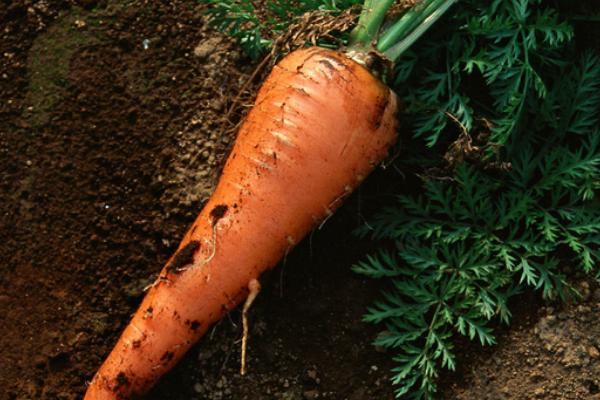 You'd better use your hands to pull the carrot out of the root of the leaf to avoid damaging the root. What you need to do is that you'd better catch the root of the leaf and shake it a few times before pulling it out.
You'd better use your hands to pull the carrot out of the root of the leaf to avoid damaging the root. What you need to do is that you'd better catch the root of the leaf and shake it a few times before pulling it out.
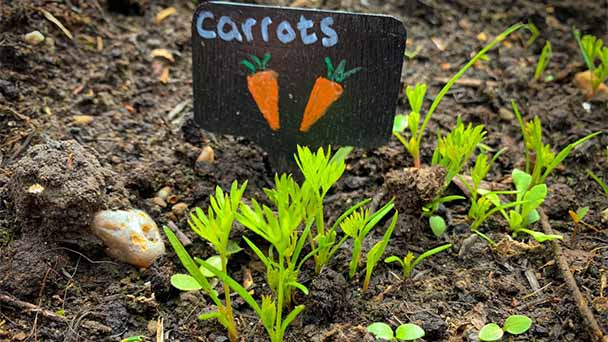 Watering the carrots before plucking the carrots will loosen the soil, making it easy to pluck out whole carrots.
Watering the carrots before plucking the carrots will loosen the soil, making it easy to pluck out whole carrots.
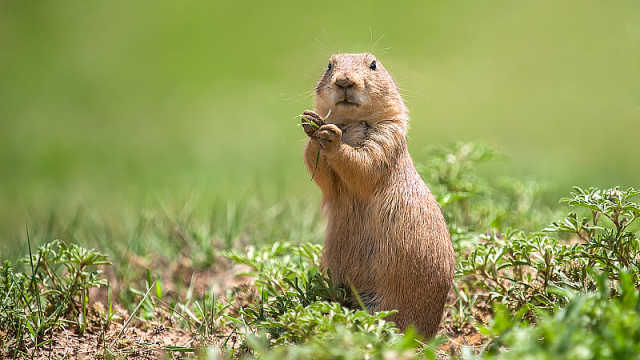
Select varietyChantenay CarrotSpherical CarrotDanvers Carrots.Nance CarrotEmperor CarrotChoose seed type of carrotsTake care of the garden for preparationDiggingTest soil pHUse fertilizerGrowing carrotsPay attention to the growing seedlingsWater carrots carefullyHarrow the soil of carrotsTake care of carrotsPut some mulch near the sprouted seedlingsPull out the small carrotsWhen to harvest carrotsHintsAttention
Select variety
Choose a carrot plant variety with root size and shape suitable for your soil. Here are five main varieties, each of which includes several sub-categories.Chantenay Carrot

Spherical Carrot
This kind of spherical carrot plant is very similar to the Chantenay carrot, but it does not grow so long.Danvers Carrots.
Danvers carrot plants are very large carrots that need to survive in heavy, fertile soil. But the soil does not need to be too deep.Nance Carrot
This carrot plant is native to France. The carrot head of Nansi is round and the whole carrot is cylindrical and can grow to 15 to 23 cm. Like Danvers carrots, Nansi carrots are grown in fertile, shallow soil.Emperor Carrot

Choose seed type of carrots
Carrot seeds are unprocessed, coated with bentonite, or treated with fungicides. Seeds coated with bentonite can retain moisture better than uncoated seeds during germination. If you want to increase the survival rate of the seeds and make the germination process easier, you'd better choose coated seeds. Moreover, coated seeds are easier to control, and you can control the planting interval better than using coated seeds for uncoated seeds. Accurate planting at intervals eliminates planting problems in the later stage.Take care of the garden for preparation
You'd better choose an area with full or partial sunlight. Although full daylight is the best, it doesn't matter if you have a little shade, because carrot plants are cold-climate crops.Digging

You'd better pick out rocks or hard, agglomerated soil in these places. Picking out all the small stones with a rake is vital for every gardener. The soil you want should be fluffy and not hard and clumpy.

Test soil pH
Carrots prefer a slightly acidic soil environment with a pH between 5.8 and 6.8. The local agricultural extension department should have soil testing methods, test kits, and guidance.Use fertilizer
It's necessary to use manure, compost, or any other organic fertilizer to fertilize the soil. Mix organic fertilizer to a depth of 10cm under the soil. This will help the seeds of carrot plants germinate and grow in the soil.Growing carrots
It's a good choice to seed a batch of carrots when the last night cream comes. Then for the next two or three weeks, another batch of seeds will be planted every week.Carrots prefer cold weather indeed. If you are planting in a cold-resistant zone of the United States Department of Agriculture 8 or warmer, you should plant it in the fall or winter. You'd better make sure the soil has been loosened again before planting.

You can sow at will or plant the seeds in rows. If carrots planted in rows, the seeds should be planted in pits 3 to 5 cm deep, and the distance between the pits should be approximately 10 cm. For fluffy soil, you can use your fingers to pick a hole. Don't forget to put six seeds in each pit.
It's a good choice to cover the seeds of carrots with 1.3cm thick loam. You can use compost, plant a soil mixture, or even mix some sand, especially in warm areas. Sand helps support the seedlings that grow. (Find more Winter Vegetables here.)
Pay attention to the growing seedlings
Due to the difference in soil temperature, the seeds of carrots will germinate after about one to three weeks. The colder soil will take longer to germinate.Water carrots carefully
The seeds are very light and fragile. If you water carrots too much or water too hard, they can easily be washed away.Harrow the soil of carrots

Take care of carrots
Gardeners should always keep the soil moist. If you are in a hot climate, water the carrots every day. Just make sure not to wash away the seeds or damage the sprouting seedlings due to excessive water pressure.Put some mulch near the sprouted seedlings

You ought to make sure to cover the carrots emerging from the mulch. If the carrot crown is exposed to the air, it will become bitter.
Pull out the small carrots
When the leaves on the carrots reach 5cm, you'd better put out the small carrots so that the remaining carrots are spaced 2.5cm apart, so as to reduce the degree of crowding so that each carrot and its roots have enough growth space.In two weeks, the leaves on the carrots will grow to a height of about ten centimeters. You can pull out the small carrots again and leave them 8 to 10 cm apart. You'd better pay attention to completing this step, otherwise the carrots will not grow straight if they are too crowded, and they may not grow completely.
When to harvest carrots
The bigger and longer the carrot grows, the sweeter and more juicy it will be. They can be eaten when they are big enough, and it takes about two to three months from sowing to harvest. When the crown slightly emerges from the soil, about 2cm in diameter, the carrots are ripe.

Hints
- Putting two earthworms in the soil will keep the soil fertile.
- Always keeping the carrot seedlings completely moist is important.
- You'd better look at your carrots every day to make sure nothing has been damaged.
Attention

- Carrots are most susceptible to leaf blight. If there are white or yellow watery spots on carrot leaves that turn brown, then it is suffering from leaf blight.
- Deer, gophers, groundhogs, and rabbits all like to steal carrots.
- Also gardeners ought to pay attention to hungry birds, they will steal carrot seeds.
- Don't let the carrot seedlings dry out, you need to water it properly.
Read Next:
10 Best Winter Vegetables that Improve Your Health
15 Fall Vegetables to Plant for Your Autumn Garden
Latest Updated
- Benefits of Bugleweed - 7 Science-backed Health Benefits
- Bugleweed Dangers & Side Effects - Is It Poisonous?
- How to Plant Evergreen Trees - What You Should Know
- When to Plant Evergreens - Grow Guide for Evergreen Trees
- 12 Wonderful Evergreen Shrubs for Your Garden
- 12 Popular Evergreen Plants with Pictures for Beginners
- When And How To Prune A Lilac Bush Like a Pro
- How to Grow & Care for Lilac Vine (Hardenbergia Violacea)
- Japanese Lilac Tree (Syringa Reticulata) Care & Propagation Guide
- Shumard Oak Pros and Cons - What to Know
Popular Articles
- Winter maintenance of Antirrhinum Majus
- How to Grow Terminalia Mantaly Tree
- How to Grow and Care for Crossostephium Chinense
- How to grow Antirrhinum Majus in spring
- Peristeria Elata (Dove Orchid) Profile: Info & Care Guide
- Underwatered Snake Plant (Sansevieria Trifasciata) - Signs And How To Fix
- How to Care for Brazilian Jasmine Plant (Mandevilla Sanderi)
- How to Grow & Care for Graptopetalum Purple Delight in Summer
- Rosa Chinensis (China Rose): Plant Growing & Care Tips
- How to Care for Baby Sun Rose (Aptenia Cordifolia)